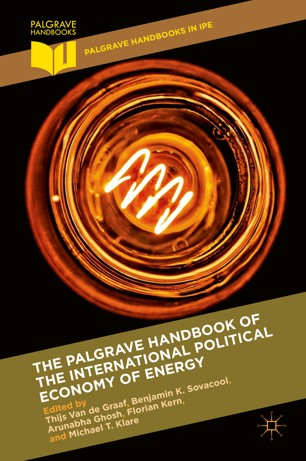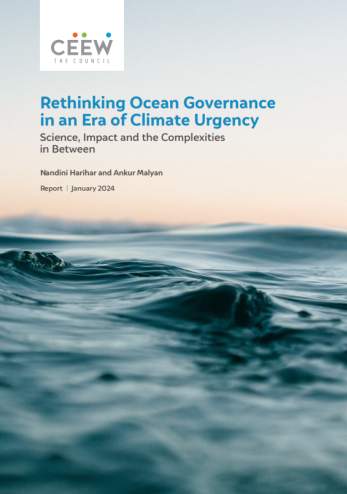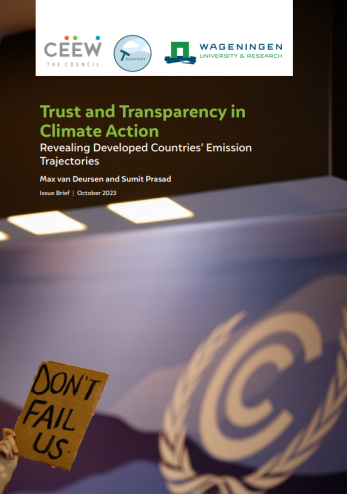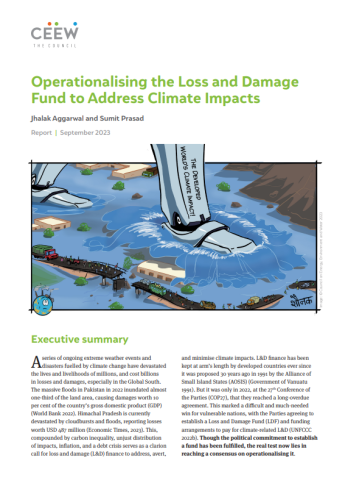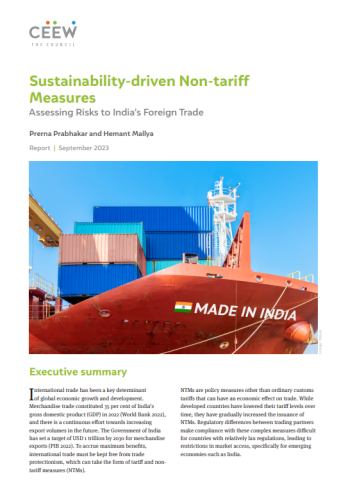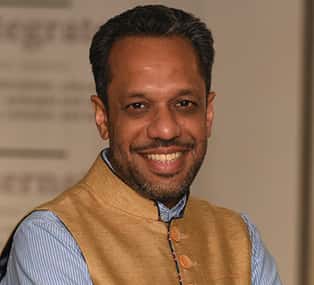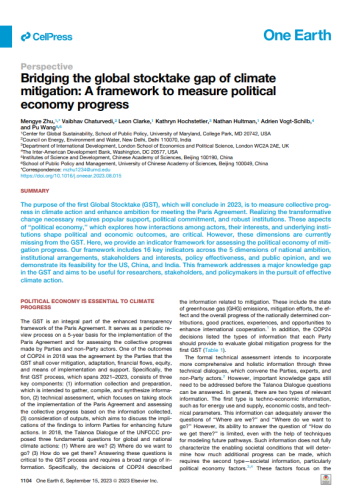Book Chapter
Clean Energy Trade Conflicts: The Political Economy of a Future Energy System
The Palgrave Handbook of the International Political Economy of Energy
Arunabha Ghosh
June 2016 | International Cooperation
Suggested citation: Ghosh, Arunabha. 2016. ”Clean Energy Trade Conflicts: The Political Economy of a Future Energy System.” In The Palgrave Handbook of the International Political Economy of Energy, Palgrave Handbooks in IPE, edited by Thijs Van de Graaf, Benjamin K. Sovacool, Arunabha Ghosh, Florian Kern, Michael T. Klare. London: Palgrave Macmillan.
Overview
With a rapidly expanding market, renewable energy is accounting for a significant share of recent trade disputes, both at the World Trade Organization (WTO) and through unilateral trade remedy measures. This chapter analyses various industrial and trade policy measures, which have contributed to protectionist outcomes and resulted in clean energy trade disputes. It examines the dispute settlement process to inquire whether it has provided adequate legal guidance to maintain open markets for clean energy. It discusses proposals for alternative mechanisms, from revisions in WTO rules to separate treaties altogether for sustainable energy. It concludes by outlining three areas of further inquiry: identifying winners and losers; the implications of pricing of energy and externalities for trade disputes; and the role of institutions in mediating trade conflict.
Key Highlights
- Approximately 11 per cent of the disputes at the WTO in the past six years have had implications for trade in clean energy. It signals growing political and economic sensitivity over any restrictions on overseas markets for clean energy.
- Tensions arise when each country takes steps to promote clean energy industry at home, actions that threaten others about the loss of competitiveness or limited market access. International trade rules frown upon the use of tariffs, non-tariff barriers or subsidies, even if they are for clean energy.
- In their trade policies, governments have used import tariffs, import duty reductions, export quotas and export subsidies. Among the most contested policies (found in more than a dozen countries) are those relating to local content requirements (LCRs), that is, those promoting intended to encourage domestic manufacturing.
- WTO rules are often challenged in the energy domain when it comes to dispute redressal. And the WTO is just one of many institutions governing energy. This fragmentation of institutions has resulted in conflicting rules, with some urging and promoting the clean energy transition while others restricting the policy tools with which governments hope to facilitate that process.
Key Recommendations
- Consider creating a separate agreement to carve out the requisite policy space to promote renewable energy within countries while remaining consistent with General Agreement on Tariffs and Trade (GATT), Agreement on Subsidies and Countervailing Measures (ASCM), and Agreement on Trade Related Investment Measures (TRIMs).
- An international Sustainable Energy Trade Agreement (SETA) - which could provide a new product classification system for clean energy equipment, lower import duties, and taxes, gradually phase out LCRs (if a domestic industry was not established within a stipulated period), develop common standards to facilitate innovation, expedite customs clearance procedures, and bring clarity to the treatment of subsidies, government procurement and other regulatory support measures.
- A shift away from mercantilist and protectionist policies altogether and, instead, facilitate multilateral cooperation on RE development and deployment. A case to point is the announcement of the International Solar Alliance – made by the governments of India and France at the Paris Conference of the Parties for the UNFCCC, that has brought together countries with solar energy potential or technologies to establish scalable markets, facilitate solar finance, and encourage collaborative R&D and also reduce the threat of loss of competitiveness.
- An expansion of the Trade Facilitation Agreement within the existing WTO provisions, for instance, could cover sustainable investment in renewables. The scope of subsidies and government support measures, which could be considered ‘non-actionable’, could be broadened to give countries the policy flexibility to promote a transition to a cleaner energy mix.
Clean energy trade conflicts are neither solely about clean energy nor the effectiveness of dispute settlement. They are, in fact, a signal that the global energy system is changing and the actors, rules, procedures and institutions to govern this new energy system are still evolving. There is likely to be far more conflict for now before the dust settles.




